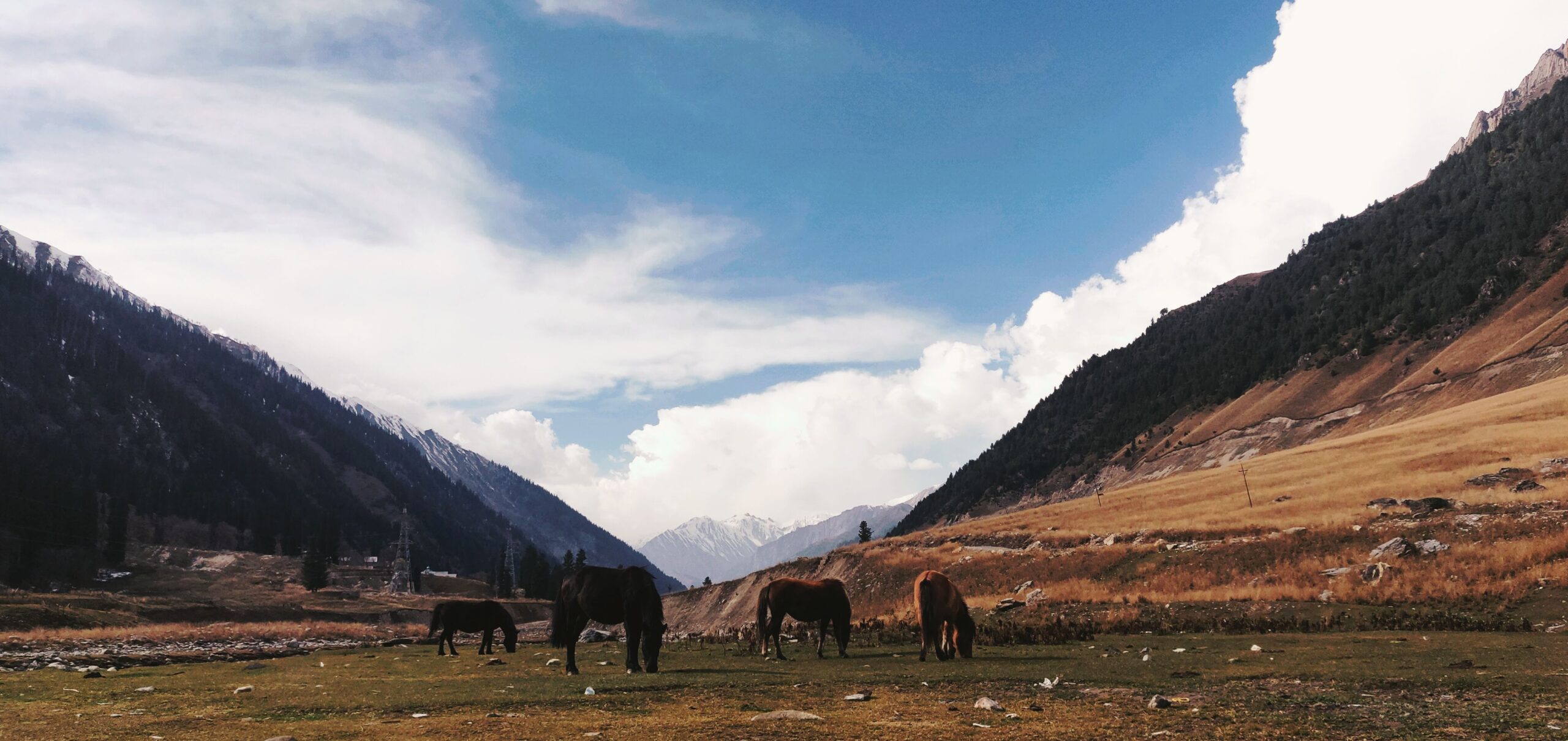
Kashmiri Wearing Culture
Kashmiri culture is known for its rich history and diverse traditions, and one of the most prominent aspects of this culture is its unique clothing style. The traditional Kashmiri clothing is colorful, vibrant, and reflects the region’s culture and lifestyle. The people of Kashmir are proud of their heritage and often wear traditional clothing for special occasions and daily wear.
Traditional Attire: The Pheran
One of the most iconic and distinctive pieces of clothing in Kashmiri culture is the pheran. The pheran is a loose, flowing robe-like garment that serves both functional and cultural purposes. It is traditionally made of wool to provide warmth during the harsh winters that Kashmir is known for.
The pheran is gender-neutral and comes in various styles for men and women. For men, it is usually knee-length and plain, while for women, it is longer, with exquisite embroidery called “aar” or “tilla” work. The aar work often features intricate patterns inspired by nature, such as chinar leaves, paisley motifs, and floral designs. The colors of the pheran are also significant, with men usually wearing darker shades and women opting for brighter colors.
Despite being centuries old, the pheran remains a staple in Kashmiri wardrobes, not just for its warmth but also as a symbol of identity and tradition. In recent years, it has also become a fashion statement, with modern adaptations that blend tradition with contemporary styles.
The Shawl: An Eternal Elegance
Kashmir is famous worldwide for its exquisite hand-woven shawls, which are an integral part of the wearing culture. The two most renowned types of Kashmiri shawls are Pashmina and Shahtoosh.
- Pashmina Shawls: Made from the fine wool of the Pashmina goat, these shawls are known for their luxurious softness and warmth. They are meticulously woven and often adorned with intricate embroidery or Sozni and Kani work. Pashmina shawls are prized possessions and are often passed down through generations, making them not just clothing but also cherished heirlooms.
- Shahtoosh Shawls: These shawls are made from the ultra-fine undercoat of the Tibetan antelope, known as the chiru. Due to the rarity and ethical concerns surrounding their production, Shahtoosh shawls are highly regulated and often considered controversial. Their softness and warmth, however, have made them coveted items among collectors.
Kashmiri women often drape shawls elegantly over their shoulders, with the way they wear them signifying their marital status. Married women traditionally cover their heads with a shawl, while unmarried women may let it hang loose. Shawls are also gifted during special occasions and festivals, symbolizing love and respect.
Contemporary Influences
The wearing culture in Kashmir is not static; it has evolved with time and been influenced by various factors, including globalization and changing fashion trends. While traditional attire still holds a special place in the hearts of Kashmiris, modern clothing styles have also made their way into the region.
Younger generations in Kashmir often blend traditional elements with contemporary fashion. For instance, the pheran has been adapted into shorter, more stylish versions that are popular among the youth. Likewise, the traditional motifs seen in aar work on pherans and shawls are also being incorporated into Western-style clothing and accessories, allowing Kashmiri culture to find its place in the global fashion scene.
Challenges and Revival Efforts
Kashmir has faced decades of conflict and political instability, which have had a significant impact on its wearing culture. The traditional handicraft industry, including shawl and pheran production, has suffered due to economic hardships and disruptions in the region. However, there have been commendable efforts to revive and preserve these traditions.
Non-governmental organizations, artisan cooperatives, and government initiatives have been working to provide training, support, and market access to local artisans. These efforts aim to not only preserve the craft but also provide sustainable livelihoods to those who depend on it.
Additionally, the tourism industry has played a crucial role in promoting Kashmiri clothing and crafts. Tourists visiting the region often buy pherans, shawls, and other traditional clothing items as souvenirs, contributing to the revival of these art forms.
Conclusion
The wearing culture in Kashmir is a reflection of its rich heritage and the resilience of its people. From the timeless elegance of Pashmina shawls to the intricate embroidery on pherans, every garment tells a story of tradition, craftsmanship, and identity.
While modern influences have made their mark, Kashmir’s traditional attire continues to be cherished and adapted for contemporary use. The challenges faced by the region have not dampened the spirit of its artisans, who are determined to keep their cultural heritage alive.
In the tapestry of Kashmiri wearing culture, each thread is a testament to the region’s history, artistry, and enduring beauty. As the world changes, the wearing culture of Kashmir remains a vibrant and vital part of the region’s identity, a timeless treasure that continues to captivate and inspire.
2 thoughts on “Kashmiri Wearing Culture”
Add a Comment Cancel reply
All Categories
Recent Posts
Detailed Analysis: Impact on Tourism in Kashmir Post-April 22 Attack
Best Time to Visit Doodhpathri – The Milky Meadows of Kashmir
Baisaran Valley Pahalgam





[…] not static museums; they are dynamic, living spaces that continue to be woven into the fabric of Kashmiri culture and identity. Festivals and celebrations often take place within these gardens, celebrating the […]
[…] Wazwan is a symbol of hospitality, community, and tradition in Kashmiri culture. It is often used to honor guests, celebrate special occasions, and bring communities […]